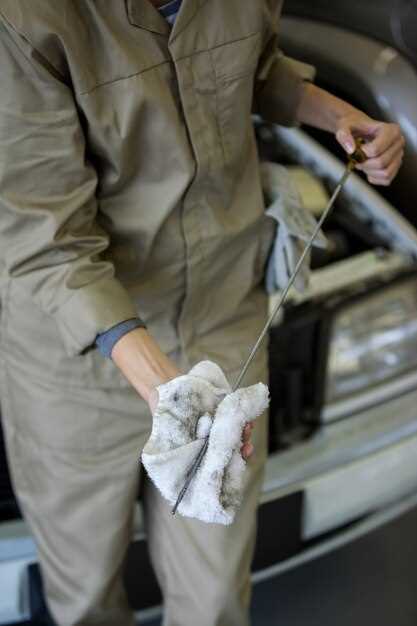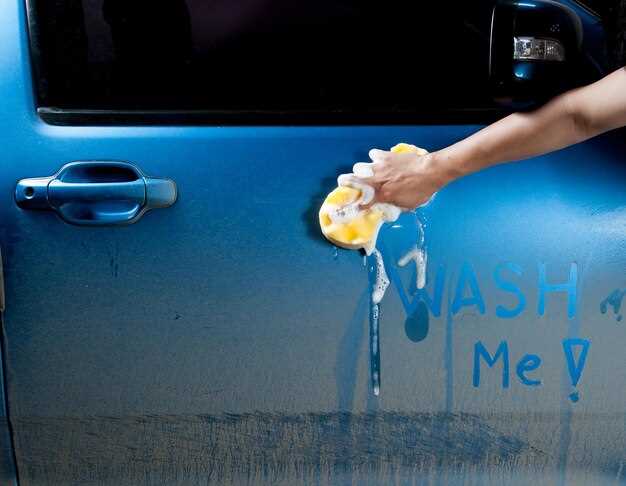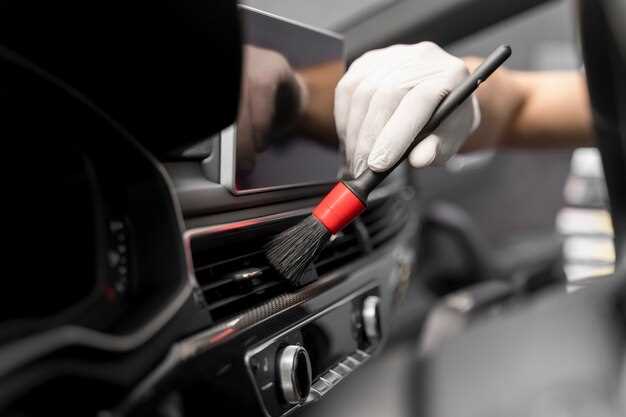Keeping your vehicle clean and rust-free


Keeping your car in pristine condition is essential for its longevity and performance, and regular washing plays a vital role in this process. Dirt, grime, and road salt can accumulate on your vehicle’s surface, leading not only to unsightly appearances but also to potential rust issues. Understanding the importance of regular maintenance can save you from costly repairs down the line.
Rust can be a serious problem for car owners, particularly in regions with harsh weather conditions. When the protective layers of your vehicle are compromised, moisture can penetrate, leading to oxidation and rust formation. Identifying effective strategies to protect your car from rust is crucial, and a significant part of this involves adopting proper washing techniques.
Incorporating simple yet effective habits into your car care routine will go a long way in prolonging its lifespan. Washing your vehicle regularly not only removes harmful contaminants but also allows you to inspect for any early signs of rust. Through diligent care and consistent attention, you can ensure that your car remains not just clean, but also rust-free, enhancing its overall appearance and value.
Regular Washing Techniques to Remove Contaminants

Maintaining a clean car is essential to protect it from rust and other damage caused by contaminants. Regular washing is the first step in keeping your vehicle shiny and free from harmful substances. When washing your car, choose a suitable location away from direct sunlight to prevent soap from drying too quickly, which can leave spots.
Start by rinsing your car thoroughly to remove loose dirt and grime. This initial rinse helps to lift larger particles that could scratch the paint during the washing process. Use a gentle stream of water to avoid causing any damage. Next, select a high-quality car wash soap that is specifically designed for automotive finishes. Avoid using household detergents, as they can strip away protective wax and contribute to rust formation.
Use a microfiber wash mitt or sponge when applying the soapy water. These materials are softer and less likely to cause scratches on your car’s surface. Work from the top down, as dirt and grime tend to settle lower on the vehicle. This method ensures that you are not dragging debris across cleaner areas. For stubborn spots like bird droppings or tree sap, allow the soap to sit for a few minutes before gently scrubbing. Rinse your mitt frequently to capture dirt without reapplying it to the car.
After thoroughly washing the entire vehicle, perform a final rinse with clean water. Ensure that all soap residue is removed, as any remaining soap can attract dirt and contaminants. Once rinsed, dry your car with a microfiber towel or a chamois to prevent water spots. Pay special attention to areas where water may collect, such as door sills and under the chassis, as trapped moisture can lead to rust over time.
Finally, consider applying a wax or sealant after washing to provide an additional layer of protection against the elements. Wax not only enhances the car’s appearance but also acts as a barrier against moisture, further reducing the risk of rust formation. Regular washing and proper drying techniques are vital in maintaining your vehicle’s integrity and preventing rust-related issues.
Choosing the Right Wax for Rust Protection
Maintaining the exterior of your car is essential for rust prevention. One of the most effective ways to protect your vehicle is by applying the right type of wax. Here are some tips to help you choose the best wax for rust protection:
- Look for a product with anti-rust properties: Some waxes specifically include ingredients designed to combat rust formation. Check the product label for information on rust inhibiting additives.
- Select a synthetic wax: Unlike natural carnauba wax, synthetic waxes tend to create a more durable barrier against moisture, acid rain, and other corrosive elements. This makes them more effective for rust prevention.
- Consider a hybrid wax: These products combine the benefits of natural and synthetic waxes. They often provide a deep shine while also enhancing protection against rust.
- Assess the ease of application: Some waxes require more effort to apply than others. Choose a product that fits your skill level and available time, ensuring you can apply it correctly for optimal protection.
- Test product longevity: Different waxes have varying longevity. Some may last only a few weeks, while others can protect your vehicle for several months. Select a wax that suits your maintenance schedule.
- Read customer reviews: Do some research into what other car owners say about the wax you’re considering. Look for feedback specifically on rust prevention performance.
Regularly applying the right wax not only enhances your car’s appearance but is also a crucial step in the prevention of rust. Make wax application a part of your vehicle maintenance routine to ensure long-lasting protection.
Inspecting and Maintaining Underbody Components

The underbody of your car is often exposed to various harsh elements, making it a prime area for rust development. Regular inspections can help you identify issues early and address them promptly to extend the life of your vehicle.
Start by lifting your car with jack stands to gain proper access to the underbody. Look for any signs of damage or rust accumulation on components such as the chassis, suspension parts, and exhaust system. Pay special attention to areas where moisture can collect, as these spots are more prone to corrosion.
Rust prevention starts with cleanliness. Use a pressure washer to remove dirt, mud, and road salt that can promote rust. After washing, apply a protective coating or rust-resistant spray to areas vulnerable to water exposure. Check the manufacturer’s recommendations for suitable products.
If you detect rust, address it immediately. Small patches can often be treated by sanding away the rust and applying a rust-inhibiting primer and paint. For more extensive rust damage, consider consulting a professional for repair options.
Incorporating regular inspections into your maintenance routine will help you keep your vehicle in optimal condition. This proactive approach not only prevents rust but also enhances your car’s overall performance and longevity.



